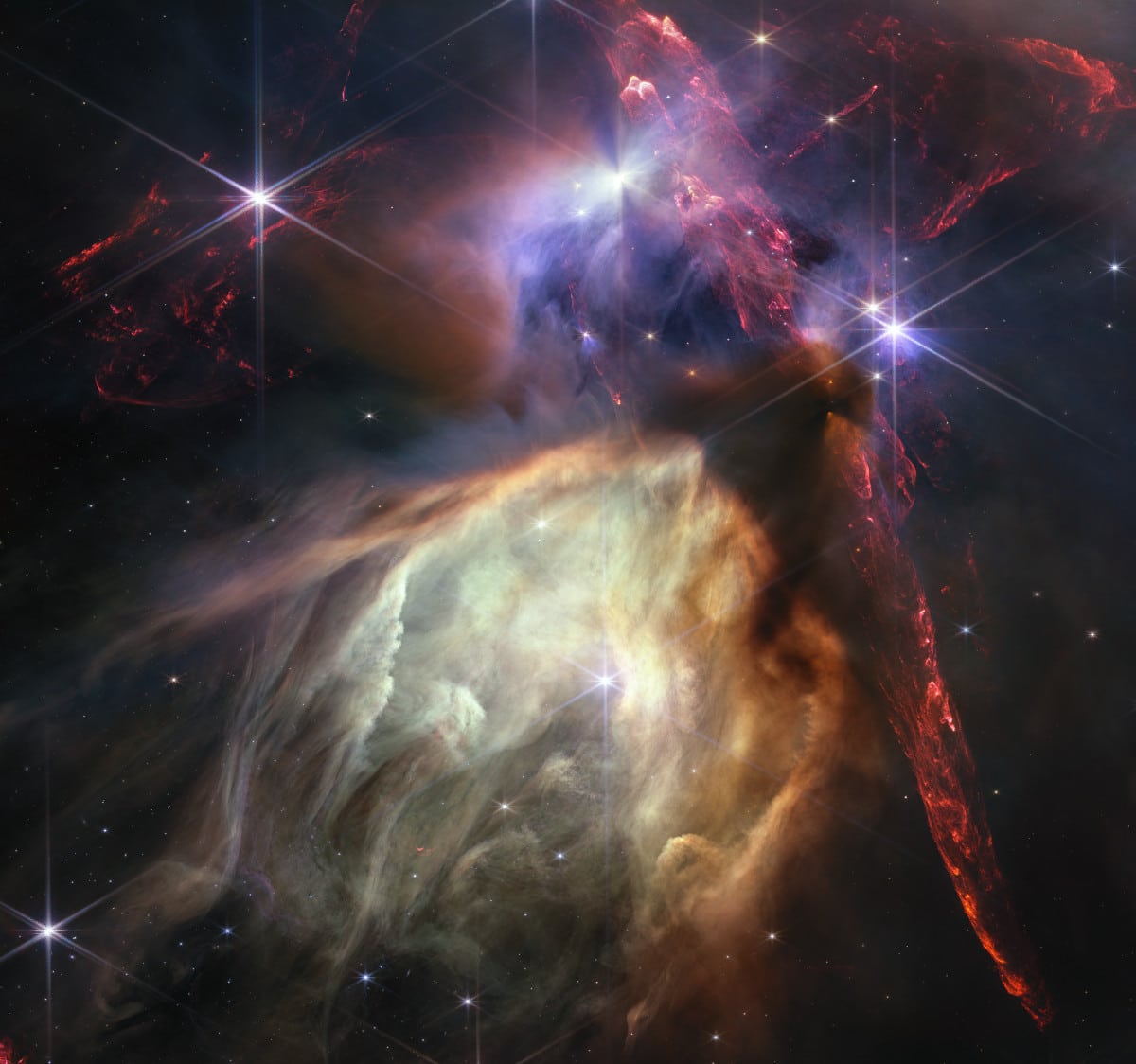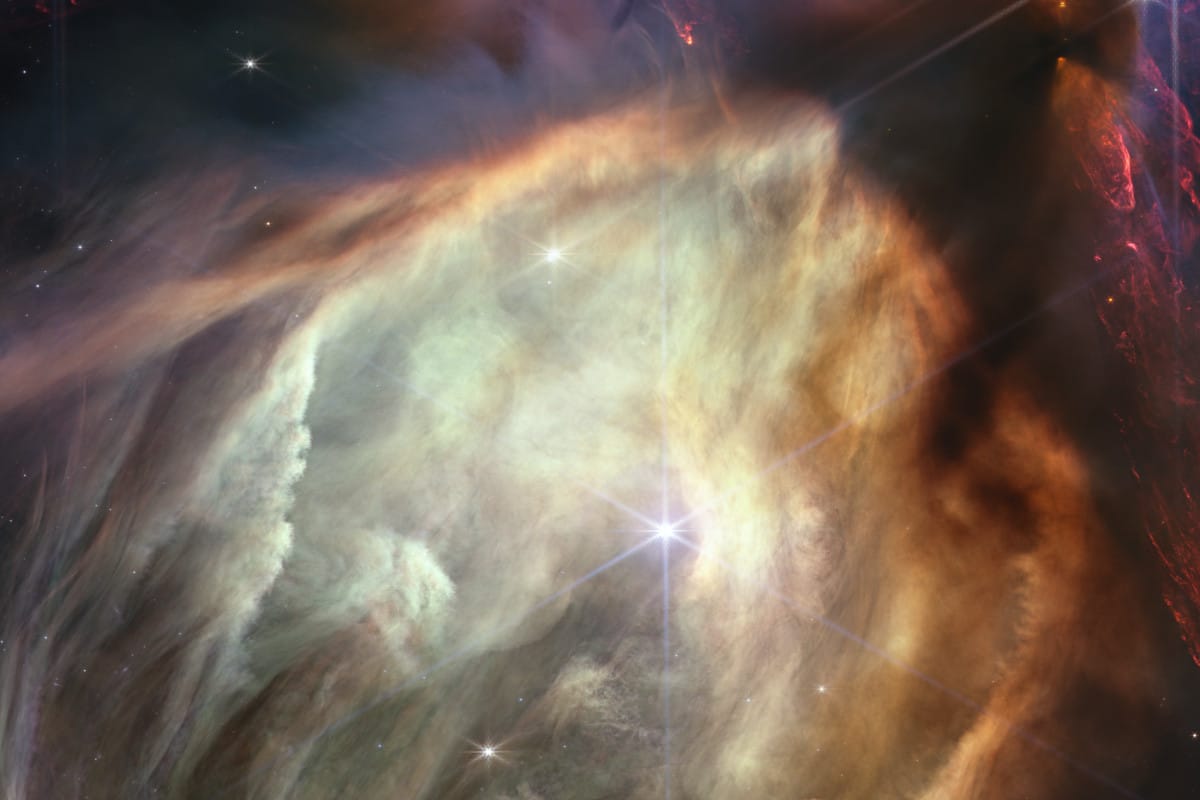
Photo: NASA, ESA, CSA, STScI, Klaus Pontoppidan (STScI)
The first deep field image taken by the James Webb Space Telescope (JWST) was shared in July 2022. Since then, the astronomy community has been in awe by glimpses of distant galaxies and formations it has been able to capture. In celebration of its first year, a 153-megapixel image of the Rho Ophiuchi cloud complex, the closest star-forming region to our solar system, has been released.
According to the European Space Agency, the new image depicts an area that contains approximately 50 young stars, all of them smaller or similar in mass to our Sun. “The darkest areas are the densest, where thick dust cocoons still-forming protostars,” they write. The red streams that cross the picture are jets of molecular hydrogen. “These occur when a star first bursts through its natal envelope of cosmic dust, shooting out a pair of opposing jets into space like a newborn first stretching her arms out into the world,” NASA explains.
On the lower part of the image, a star known as S1 takes center stage, carving out what NASA describes as a “glowing cave of dust” in this cosmic nursery located 390 light-years from Earth. “It is the only star in the image that is significantly more massive than the Sun,” they add.
The image also features stars with tell-tale shadows indicating the presence of protoplanetary disks. Meaning they are potential future planetary systems in the making. As such, this will also give astronomers some insight into the look of the early days of our solar system. “Webb’s image of Rho Ophiuchi allows us to witness a very brief period in the stellar lifecycle with new clarity. Our own Sun experienced a phase like this, long ago, and now we have the technology to see the beginning of another’s star’s story,” said Klaus Pontoppidan, former JWST project scientist.
The breathtaking image is a testament to Webb’s reach, and its images will keep helping scientists unravel the mysteries of our universe. “In just one year, the James Webb Space Telescope has transformed humanity’s view of the cosmos, peering into dust clouds and seeing light from faraway corners of the universe for the very first time,” said NASA Administrator Bill Nelson. “Every new image is a new discovery, empowering scientists around the globe to ask and answer questions they once could never dream of.”
In celebration of the first year of the James Webb Space Telescope (JWST), a 153-megapixel image of the Rho Ophiuchi cloud complex, the closest star-forming region to our solar system, has been released.

Zoom in the S1 star in the Rho Ophiuchi cloud complex. Photo: NASA, ESA, CSA, STScI, Klaus Pontoppidan (STScI)
“In just one year, the James Webb Space Telescope has transformed humanity’s view of the cosmos, peering into dust clouds and seeing light from faraway corners of the universe for the very first time,” said NASA Administrator Bill Nelson.
h/t: [PetaPixel]
Related Articles:
Rare Star on the Brink of Going Supernova Photographed by the James Webb Space Telescope
James Webb Space Telescope Releases Stunning New Shot of the Pillars of Creation
James Webb Space Telescope Captures Stunning Mosaic Image of the Tarantula Nebula
